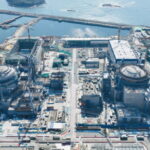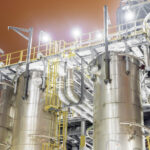Energy News Beat
At the meeting of the Standing Committee of the State Council, chaired by Chinese Premier Li Qiang, approval was granted for units 3 and 4 at China General Nuclear’s (CGN’s) existing Taipingling nuclear power plant in Guangdong province, as well as units 1 and 2 at China National Nuclear Corporation’s (CNNC’s) new Jinqimen nuclear power plant in Zhejiang province.
The Taipingling plant will eventually have six Hualong One reactors. The construction of the first and second units began in 2019 and 2020, respectively. Unit 1 is scheduled to start up in 2025, with unit 2 following in 2026.
Cold functional tests began at Taipingling 1 on 22 December, CGN announced. The tests mark the first time the reactor systems are operated together with the auxiliary systems. Cold functional tests are carried out to confirm whether components and systems important to safety are properly installed and ready to operate in a cold condition. The main purpose of these tests is to verify the leak-tightness of the primary circuit and components – such as pressure vessels, pipelines and valves of both the nuclear and conventional islands – and to clean the main circulation pipes.
Units 1 and 2 of the Jinqimen plant – which CNNC notes have been included in the national plan and have undergone a comprehensive safety assessment review – have also been approved. CNNC subsidiary CNNC Zhejiang Energy Co Ltd will be responsible for project investment, construction and operations management of the new plant.
On 31 July last year, China’s State Council approved the construction of six nuclear power units: units 5 and 6 of the Ningde plant in Fujian Province; units 1 and 2 of the Shidaowan plant in Shandong Province; and units 1 and 2 of the Xudabao plant in Liaoning Province. The latest approvals bring the total number of nuclear power projects approved in 2023 to ten, the same number approved in 2022.
Construction milestones
The Hualong One design features a double-layered containment structure. The main function of the containment building is to ensure the integrity and leak tightness of the reactor building, and it plays a key role in the containment of radioactive substances.
Installation of the inner dome at Changjiang 4 (Image: CNNC)
CNNC announced that the inner dome of the containment building of unit 4 at the Changjiang plant in Hainan province and the outer dome of unit 2 at the Zhangzhou plant in Fujian province were hoisted into place on 27 and 28 December, respectively.
Hoisting of the outer dome at Zhangzhou 2 (Image: CNNC)
Meanwhile, the reactor pressure vessel of unit 3 of the Sanmen plant in Zhejiang province was hoisted into place on 25 December. The “open-top method” was used, which involved using a 2600-tonne crane to install the vessel – weighing more than 271 tonnes – prior to the dome of the containment building being hoisted into place.
The reactor pressure vessel is move into place at Sanmen 3 (Image: SNERDI)
The first safety-related concrete was poured for the nuclear island of Sanmen 3 on 28 June, marking the official start of its construction. Phase II (units 3 and 4) of the Sanmen plant – which already houses two operating Westinghouse AP1000 units – will comprise two CAP1000 reactors, the Chinese version of the AP1000. The units are scheduled to start up in 2027 and 2028, respectively.
Source: World-nuclear-news.org
ENB Top News
ENB
Energy Dashboard
ENB Podcast
ENB Substack
The post China approves construction of four new reactors appeared first on Energy News Beat.








